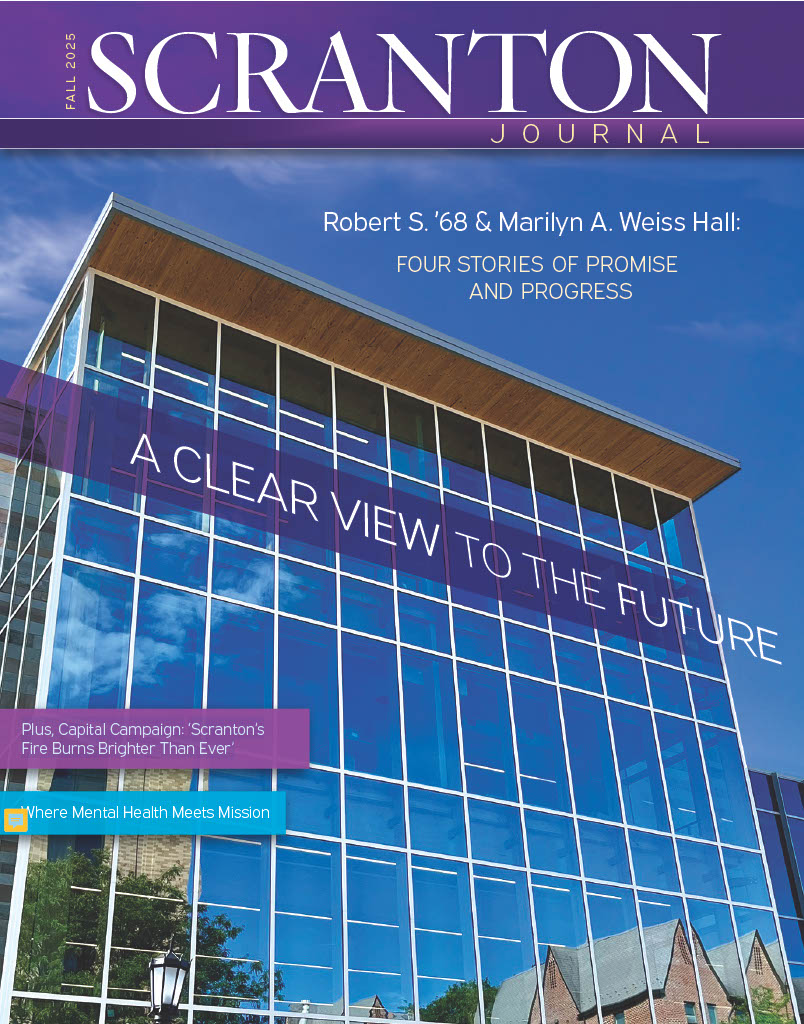Some people get a rush of anticipation as they unwrap a piece of candy. Connie Williams ’85 gets that little rush before she unwraps.
Williams has spent the past 25 years in the packaging industry at Mars, Inc., home of M&Ms and the Milky Way bar. She moved from the analytical lab to the quality assurance group before she took on her current position as a research manager for flexible materials.
Despite two decades in the same business, her days are never static. Take, for example, the thrill she recently felt when she inspected some new product samples.
“I was so excited my body was shaking,” she said.
As a subject-matter expert on flexible material for Mars Wrigley Confectionery and a regional point person for the company’s Wrigley arm, this chemistry alumna helps concoct the perfect recipe for packaging.
Sealed
To her, packaging, product development and product innovation are thrilling, but she does not often go into detail about what she does, nor, in casual conversations, does she always even name the company for which she has worked for the bulk of her career.
“I say, ‘I work for a
This is not only because she is humble, suggesting that her life is “too boring” to write about (mentioning her deep interest in the oxidation of materials), but because her life in packaging simply involves too many trade secrets. So don’t expect her to tell you what’s next on the packaging front; instead, ask her what’s new now and what she had to do with it.
Remember when M&M’s candy bags used to lie stacked atop each other on market shelves and partakers needed a secondary bag for leftovers? Well, this year’s big achievement is stand-up pouches, with resealable closures.
“My work helped get us into the pouch,” Williams
Then, she quickly went back to modest Williams, but she didn’t stop talking shop.
“Quality is our first principle at Mars — I know I’m OK if I keep that in mind,” she said. “Early on, I learned to understand the effort you put into quality has to be carried through
Sean Shanley ’91, vice president of business development at a privately held packaging company, is more than happy to brag for Williams. In a (pea)nut (M&M) shell, he puts it this way: “There’s an entire industry that hangs on Connie. She’s an industry staple. Her guidance, direction and approval are essential to all of us in the packaging world.”
Williams describes herself as a woman of few, sometimes blunt, words, a tendency she likes to blame on hailing from the Northeast.
“I don’t have a lot to say, but what I say is pointed,” she said. “You want to understand everyone’s perspectives before you interject. I take a step back and listen to everything people are saying. Then I form a pointed response.”
Her background in chemistry led her to analyze, predict outcomes and then test, and her Jesuit education introduced her to the differing perspectives she would encounter in her career.
“There were a lot of different faiths at Scranton, and people were accommodating to many different cultures,” she said. “That taught me a lot; it’s really what you get when you’re anywhere in the world.”
Curiosity Space
Williams has thrived in her career after carving out a path for herself in a manner consistent with the Jesuit tradition of seeking. Choosing her major not because of how much, but how little, she knew about the subject “has led me to this intellectual curiosity space,” she explained.
Not that she ever imagined a life in the candy industry.
“I saw myself working in analytical labs and working through different components analytically vs. working with products,” she said.
Yet, as any discernment-minded graduate of a Jesuit school might, Williams left herself open to dialogue and growth. “It morphed into, ‘I’m going to use that chemistry space to see how I can stop peanut oxidation,’ ” she said.
Williams lauded all the chemistry professors she had at
Questioning has served her well in her professional life, which began in a lab where she worked with antiperspirants and progressed to another Dow Chemical Company position before she applied for a job at Mars.
“Mars gives you the opportunity to move around and explore,” Williams said, explaining it’s about finding your highest purpose. She said she found her niche in packaging, settled in and “hasn’t moved for 20 years.”
These days, though she looks forward to retirement, Williams remains energized by her daily work. She said she regularly draws heavily upon her strong Scranton chemistry and mathematics education in calculating product shelf life, for example. But it’s cellophane that stirs her fire at the moment.
Scientific Resource
“By the time I hit packaging, cellophane had been replaced by oriented polypropylene [similar to plastic],” she said. “Cellophane had fallen out of favor due to sustainability issues.”
In keeping with the Jesuit tradition of stewardship of Earth’s resources, Williams does not take such issues lightly. “The question now is, ‘Is cellophane sustainable?’ Can packaging film go from a petrochemical back to a renewable resource?”
Like the good questioner she was taught to be, she knows the task at hand, which is, “to get cellophane to a state where it negates the effect of being from trees,” she said.
Her job is obviously scientific — she knows well which materials create moisture and aroma barriers, for example — yet she has to connect it to people, both inside and outside the company.
“I’m a resource for the packaging group. Instead of a book on the shelf, they have a Connie in a chair,” she said, laughing. “I also break things down for people outside my group so they understand why we do the things we do.”
And why does she do the things she does? It is the thrill of the process and the satisfaction she gets when she pulls the bag she helped design off the shelf, unseals it and tastes the candy inside.


